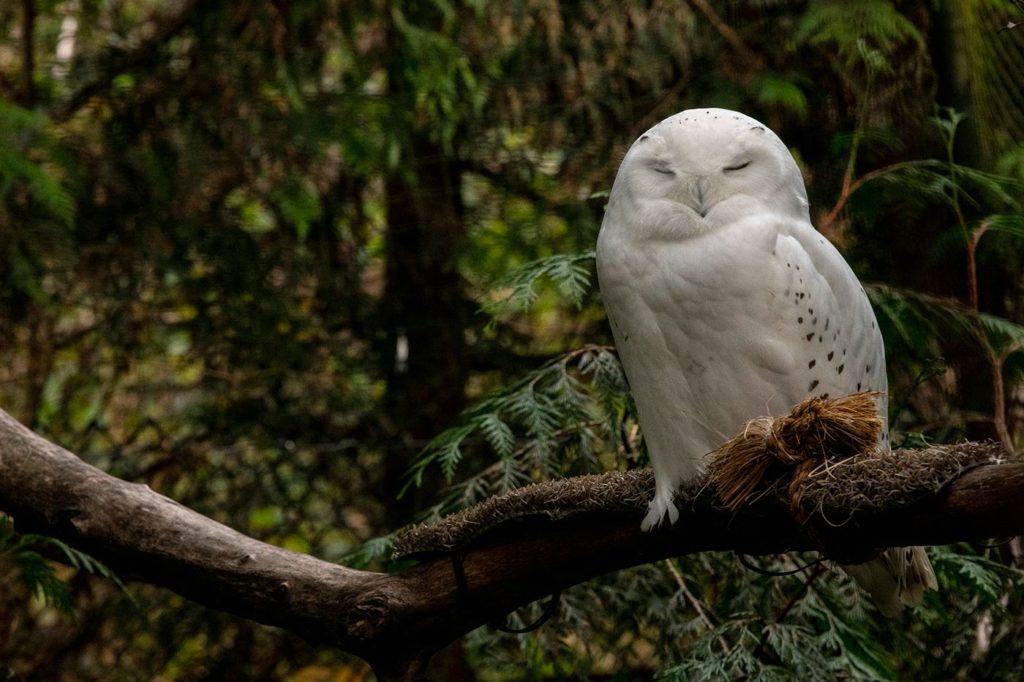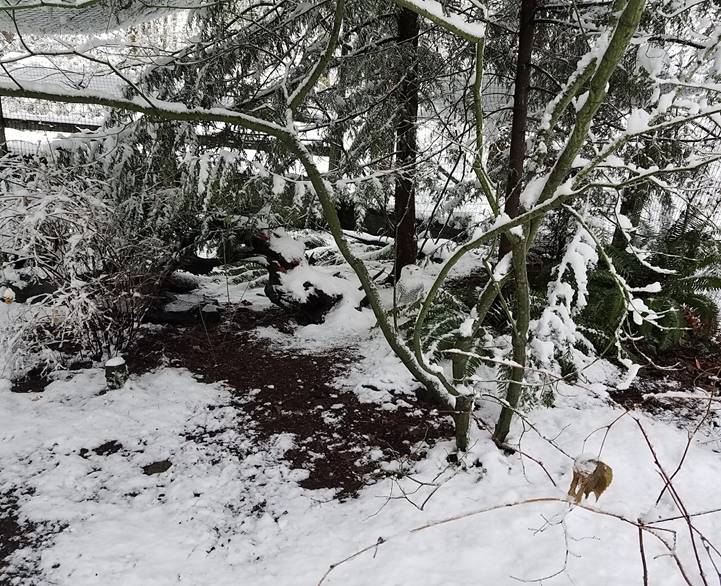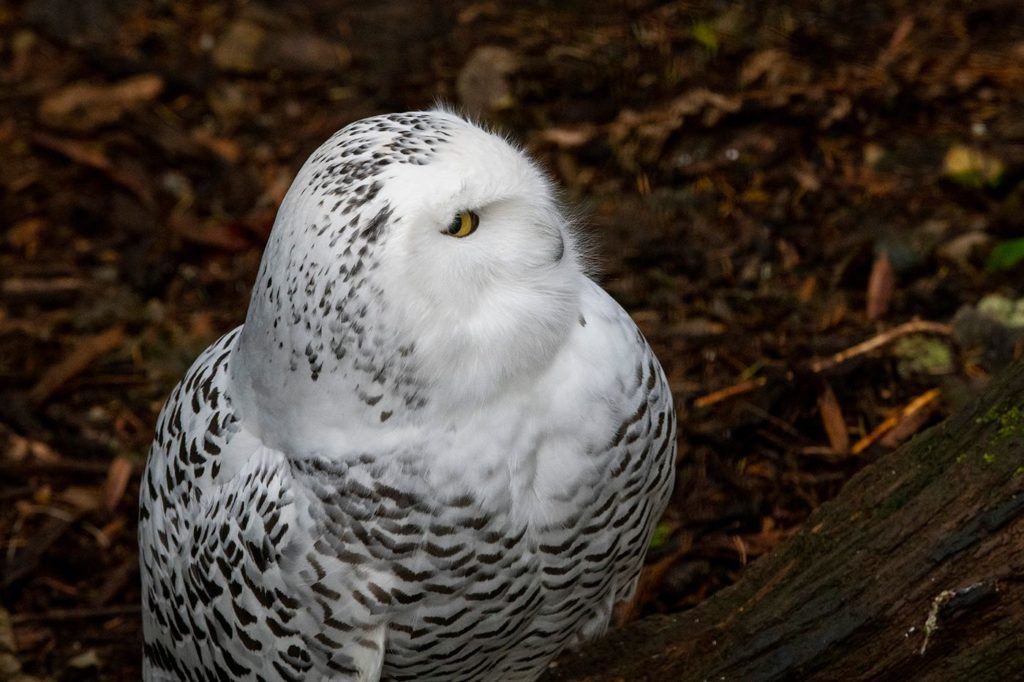Being native to the Pacific Northwest, the animals at Northwest Trek don’t seem to mind the colder winter weather. But the snowy owls at the park don’t just put up with it, they thrive in it.
Tundra, a male, and Taiga, a female, embrace these cooler temperatures and it shows.
“They’re more active at this time of year and we notice a big increase in their food drive,” said keeper Miranda Mauck. “Their favorite food is mice!”

In the wild, snowy owls live near beaches and fields in the winter in Alaska and Canada… brrr!
Now you see me, now you don’t!
Can you spot a snowy owl in the picture below? Their white feathers camouflage them in snowy conditions!

Still can’t see them? Hint: Look between the fork or the “V” of the tree branches in the foreground.
Another fun fact about them: snowy owls have extra feathery feet that act as snowshoes on top of the snow.
Caring for them
Caring for our animals is at the center of everything we do at Northwest Trek. Keepers monitor all of the animals closely to ensure they are comfortable and healthy. Taiga was hatched with limited vision, with cataracts in both eyes. Because of that, the snowy owls’ habitat has few obstacles so Taiga can always be familiar with her environment.
Who’s who?
Next time you visit the park, try to see if you can tell who’s who! Males like Tundra are whiter and have dark specks on their feathers. Females, like Taiga pictured below, are larger and have even more dark spots on most of their feathers.
